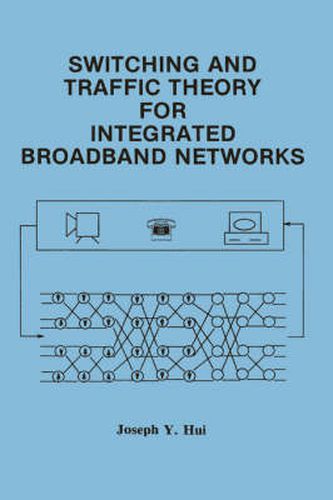Readings Newsletter
Become a Readings Member to make your shopping experience even easier.
Sign in or sign up for free!
You’re not far away from qualifying for FREE standard shipping within Australia
You’ve qualified for FREE standard shipping within Australia
The cart is loading…






This title is printed to order. This book may have been self-published. If so, we cannot guarantee the quality of the content. In the main most books will have gone through the editing process however some may not. We therefore suggest that you be aware of this before ordering this book. If in doubt check either the author or publisher’s details as we are unable to accept any returns unless they are faulty. Please contact us if you have any questions.
The rapid development of optical fiber transmission technology has created the possibility for constructing digital networks that are as ubiquitous as the current voice network but which can carry video, voice, and data in massive qlJantities. How and when such networks will evolve, who will pay for them, and what new applications will use them is anyone’s guess. There appears to be no doubt, however, that the trend in telecommunication networks is toward far greater transmission speeds and toward greater heterogeneity in the requirements of different applications. This book treats some of the central problems involved in these networks of the future. First, how does one switch data at speeds orders of magnitude faster than that of existing networks? This problem has roots in both classical switching for telephony and in switching for packet networks. There are a number of new twists here, however. The first is that the high speeds necessitate the use of highly parallel processing and place a high premium on computational simplicity. The second is that the required data speeds and allowable delays of different applications differ by many orders of magnitude. The third is that it might be desirable to support both point to point applications and also applications involving broadcast from one source to a large set of destinations.
$9.00 standard shipping within Australia
FREE standard shipping within Australia for orders over $100.00
Express & International shipping calculated at checkout
This title is printed to order. This book may have been self-published. If so, we cannot guarantee the quality of the content. In the main most books will have gone through the editing process however some may not. We therefore suggest that you be aware of this before ordering this book. If in doubt check either the author or publisher’s details as we are unable to accept any returns unless they are faulty. Please contact us if you have any questions.
The rapid development of optical fiber transmission technology has created the possibility for constructing digital networks that are as ubiquitous as the current voice network but which can carry video, voice, and data in massive qlJantities. How and when such networks will evolve, who will pay for them, and what new applications will use them is anyone’s guess. There appears to be no doubt, however, that the trend in telecommunication networks is toward far greater transmission speeds and toward greater heterogeneity in the requirements of different applications. This book treats some of the central problems involved in these networks of the future. First, how does one switch data at speeds orders of magnitude faster than that of existing networks? This problem has roots in both classical switching for telephony and in switching for packet networks. There are a number of new twists here, however. The first is that the high speeds necessitate the use of highly parallel processing and place a high premium on computational simplicity. The second is that the required data speeds and allowable delays of different applications differ by many orders of magnitude. The third is that it might be desirable to support both point to point applications and also applications involving broadcast from one source to a large set of destinations.